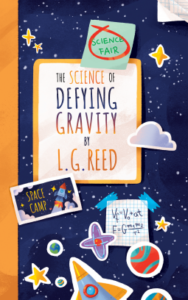“Getting Kids Interested in Science”
Your kid begs you to help her build a model of a volcano or a model airplane or experiment with chemistry. An impossible dream? I argue the answer is NO! Science is all around us and you can get your kids excited about exploring science with fun, easy projects that can be done at home.
Why bother getting kids excited about science? Because it can be a fun way to learn! I had a friend who was a propulsion engineer and she would go to schools to talk. Now, let’s face it, propulsion engineer sounds pretty dull – right? She started her talks by saying, “I blow things up for a living.” That got the kids attention! A career blowing things up sounded pretty darn cool. Well, among other things, science teaches us how things blow up, through chemistry and physics. Scientific processes do amazing things every day. Make it fun and your kids will love it!
- Let’s start with a few basics. Science is broken down into disciplines, or categories: Biology, Chemistry, Physics, Earth Science, Geology. Some people would add space science (also known as astronomy and psychology
Kids may gravitate to one or the other. Here is a quick breakdown of the difference between them.
- Biology – the study of life systems, including humans.
- Chemistry – the study of the property of matter and how matter changes, along with the elements of the periodic table and how they interact to create materials, drugs, foods, fuels…
- Physics – the study of the elemental rules that govern our lives on earth. Magnetism, Gravity, and how these forces effect matter.
- Geology – the study of the structure of the earth.
- Astronomy – the study of the planets, stars and the universe, and psychology –the study of the human psyche.
I you aren’t sure what area of science your child gravitates to (see I used a science term there to mean what they are pulled toward) that’s not a problem. Most aspects of science are addressed by more than one discipline. Below are some experiments or projects kids can do at home to explore what interests them. You’ll want to be on hand to help.
Biology – Plant a sunflower seed. As it grows, observe how the flower head follows the sun or artificial grow light in a demonstration of heliotropism. Or plant a cucumber seed and place a stick or taut string beside the plant and observe how the tendrils wrap around the string. Which way do they go? Then have the kids do some research to understand why. This project takes a bit of time, as the seeds need to germinate and grow. Use the time to encourage your kids to read up on how a seed turns into a plant. Find this and more at the following website: https://www.shareitscience.com/search?q=tendrils
Chemistry – Start with a hardboiled egg. Place it in a container with vinegar. Let it sit for at least a day. It will get all fizzy and scuzzy. Then wash it off and watch as the shell dissolves. Vinegar, or acetic acid, has dissolved the shell, which is mostly calcium, leaving the egg underneath. Find this and more at the following website: https://www.3plearning.com/blog/simple-chemistry-experiments-kids-home/#Egg
Physics – Take four popsicle sticks and three rubber bands and make a catapult. See how far you can toss a coin or other light object. Does the weight of the object effect the distance or height it reaches? (use objects of differing weights) This one should be done with adult supervision as the rubber bands can break, or kids might decide to see whether it hurts to have a penny chucked at them. Check out the details and an illustrative video at this website: https://interestingengineering.com/7-diy-physics-experiments-that-will-impress-everyone
Geology – Using just corn flower and water you can make your own quicksand. This one is messy, so outside please! https://www.sciencekids.co.nz/experiments/quicksand.html
One last tidbit. Search Pinterest for SCIENCE PROJECTS FOR KIDS. And find links to loads of websites that contain interesting projects for you and your kids to explore the different areas of science. Couple the experiment with a discussion about what is happening and a supervised internet search for reasons to explain observations and you’ve got yourself an engaged, citizen-scientist in the making!
About the Author: Author and publisher, L. G. Reed believes stories that provide an artistic or relationship story along with a science focus can be an effective way to hook girls into STEM, especially at the earliest ages. She targets middle school because research has shown that these years are crucial to establishing girl’s interest in STEM topics.
Reed’s background in science and technology came from her career as an aerospace engineer, and her latest book THE SCIENCE OF DEFYING GRAVITY reflects that. She insists, however, that the book isn’t just about science. It’s about perseverance and curiosity — because every kid has those traits. Her goal is to spark their interest and get them to think that science and tech is something they can do.
Reed’s debut novel, The Maiden Voyage of the Maryann won the Cygnus Awards 1st Place – Women’s Fantasy/SciFi Category. Her second book, a middle-grade fantasy titled Sydney Porter: Dog Girl was an Amazon best seller.
Adding to her writing, she is channeling her love of books and writers into Keyes Canyon Press, an independent publisher focusing on middle grade and young adult fiction, and poetry for all ages. Keyes Canyon Press seeks outstanding manuscripts that encourage reading and learning. Un-agented authors are encouraged to submit.
Expected Publication: September 9th, 2020 from Keyes Canyon Press
About the Book: THE SCIENCE OF DEFYING GRAVITY is a middle-grade STEM based fiction. 11 yr old Cassie films her life. She loves movies and dreams of becoming a movie director in space. When her plans to go to Space Camp are derailed when her dad loses his job and she must win a science fair to earn a scholarship to attend. Spunk, a caring teacher, an engineering mentor and her friends keep her dream on track.
Contained within THE SCIENCE OF DEFYING GRAVITY is an actual science fair project, including tables and charts for kids to see. The project covers the four forces of flight—lift, thrust, gravity and drag—which are embedded in the fictional story but are factually accurate and have been verified by working engineers and engineering students.
“Useful, entertaining, and encouraging; will inspire confidence and an appreciation of science.” — Kirkus Reviews
“Tweens who enjoy making, building, and learning will get the most from this book about what it takes to become a scientist.” — Booklife Reviews
Thank you, L.G., for these fun science activities for kids!



Thanks for sharing the science activities with your readers!